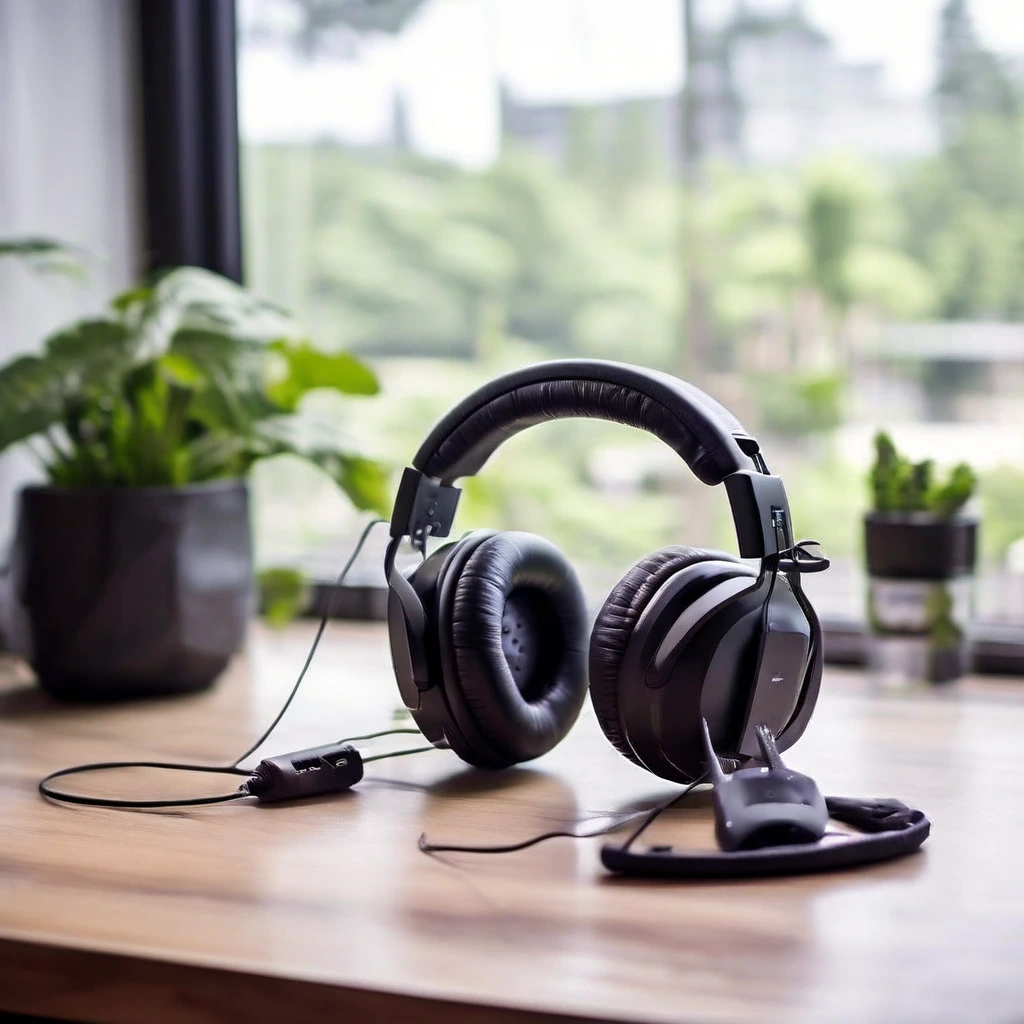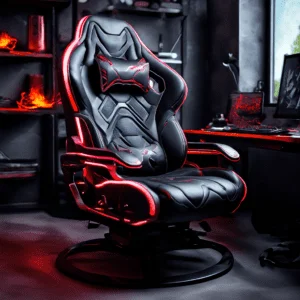How to Pick a Good Headset: The Ultimate Guide
Discover how to find the best headset with our complete buying guide. Learn about sound quality, comfort, and features.
Outline
- Introduction
- Why picking the right headset matters
- What influences headset quality
- Learning about Headset Types
- Over-ear vs. on-ear vs. in-ear
- Wired vs. wireless
- Gaming, office, and music headsets
- Sound Quality: What to Expect
- Frequency response
- Noise cancellation (Active vs. Passive)
- Surround sound vs. stereo
- Comfort and Design
- Ear padding materials
- Adjustable headbands
- Weight considerations
- Microphone Quality
- Built-in vs. removable mic
- Noise reduction features
- Boom vs. inline microphones
- Wired vs. Wireless Headsets
- Pros and cons of each
- Bluetooth versions and connectivity
- Battery life and charging time
- Compatibility with Devices
- PC, console, mobile, and tablet compatibility
- USB vs. 3.5mm jack vs. Bluetooth
- Durability and Build Quality
- Materials used in construction
- Foldable vs. non-foldable designs
- Water and sweat resistance
- Price vs. Performance
- Budget, mid-range, and premium options
- Best brands for different budgets
- Top Headset Brands and Models
- Best-selling and highly rated headsets
- Reviews from experts and users
- Where to Buy the Best Headsets
- Online vs. offline shopping
- Trusted websites and stores
- Warranty and return policies
- How to Clean and Maintain Your Headset in Tip-Top Shape
- Cleaning headbands and ear cushions
- Safe storage and handling
- Extending the life of your headset
- Common Mistakes to Avoid When Buying a Headset
- Ignoring reviews
- Not considering comfort
- Buying cheap knock-offs
- Conclusion
- Final thoughts on choosing the right headset
- FAQs
- What is the best gaming headset?
- How do I know if a headset has good sound?
- Are wireless headsets better than wired headsets?
- What is the average lifespan of a headset?
- How to fix a one-sided non-working headset?
- How to Obtain a Quality Headset: The Complete Guide
Introduction
It is often daunting to choose the right headset considering the number of options available. Whether gaming, professional, or music, the right headset complements the experience. In this guide, you will find the characteristics that set a good headset apart and the way to pick the one which is most ideal for your requirement.
Recognizing Headset Varieties
Pre-purchase of a headset is complete only after learning the types:
- Over-ear headsets: Offer ambient sound but tend to be bulkier.
- On-ear headsets: They are smaller in size but could be ear-fattening.
- In-ear headsets: They are portable and light-weighted but low on sound quality.
- Wired headsets: Provide a constant connection and sound quality.
- Wireless headsets: Offer ease of movement but need to be charged.
- Gaming headsets: Equipped with surround sound and noise reduction features.
- Office headsets: Prioritize comfort and microphone quality.
- Music headsets: Prioritize sound fidelity and bass response.
Sound Quality: What to Look For
Sound quality is the most critical factor in choosing a headset. Look for:
Frequency response: The wider the range (e.g., 20Hz – 20kHz), the better the sound quality.
Noise cancellation: Active Noise Cancellation (ANC) removes external noise, while passive noise isolation reduces background noise.
Surround sound vs. stereo: Surround sound is more appropriate for gaming to deliver the best experience, while stereo can be utilized for music and phone calls.
Comfort and Design
The headset must be comfortable, especially when used for extended periods. The key points are:
- Ear padding material: Memory foam is more comfortable.
- Adjustable headbands: Offer a proper fit for any head size.
- Weight: A light headset is best for extended use.
Microphone Quality
For voice chatting, microphone quality is important. Consider:
- Built-in vs. detachable microphones
- Noise reduction features for crisp audio
- Boom microphones for improved voice recording
Wired vs. Wireless Headsets
Both are pros and cons:
- Wired: Stable and doesn’t require charging.
- Wireless: Handy but based on battery level and Bluetooth availability.
Compatibility with Devices
Make sure your headset is compatible with your devices:
- PC, consoles, and smartphone compatibility
- USB, 3.5mm jack, and Bluetooth compatibility
Durability and Build Quality
A long-lasting headset is great. Check for:
- High-grade materials
- Flexible and foldable designs
- Water and sweat resistance
Price vs. Performance
Consider your budget and get the best value:
- Budget headsets: Low features, good quality.
- Mid-range headsets: Balance between quality and price.
- High-end headsets: Excellent sound and build quality.
Top Best Headset Brands and Models
- Logitech: Good for gaming and office use.
- Razer: Best for gamers.
- Sony: High-end sound quality.
- Bose: Top noise cancellation.
- Sennheiser: High-fidelity sound.
Where to Buy the Best Headsets
- Online stores: Amazon, Best Buy, manufacturers’ websites.
- Physical retail locations: Electronics retail stores to try out by hand.
- Check warranty and return policies before purchasing.
Conclusion
The choice of a good headset depends on your needs. Consider sound quality, comfort, durability, and cost. Check reviews, do comprehensive research, and select a headset that suits your lifestyle.
FAQs
What headset is best suited for gaming?
Razer and Logitech headsets are great for gaming.
How can I determine if a headset has good sound quality?
Test frequency response, drivers, and reviews.
Are wireless headsets better than wired headsets?
Wireless is convenient, while wired is solid connectivity.
What is the average lifespan of a headset?
Typically 2-5 years, based on use and quality.
How do I fix a headset that has one side not functioning?
Test connections, update drivers, or test using another device.
Benefits of Best Headset
✅ Richer Sound Experience – An excellent headset offers detailed and rich sound for music, gameplay, or movies.
✅ Long-Term Comfort – An excellent headset does not cause ear fatigue or headaches even with extended use of hours.
✅ Better Communication – A clear microphone improves calls and team communication in gameplay or work meetings.
✅ Concentration Noise Cancellation – Active Noise Cancellation (ANC) quiets distracting noise, and you can concentrate.
Drawbacks of a Substandard Headset
❌ Distorted or Weak Sound – Substandard headsets typically produce crackling or muffled sound.
❌ Hurtful to Wear – Poorly designed headsets may cause sweating or discomfort after a couple of uses.
❌ Lower Battery Life (Wireless Headsets) – Certain wireless headsets need to be recharged frequently, which is annoying.
❌ Break Easily and Brittle – Low-quality materials will make ear cushions deteriorate, headbands crack, or become loose wiring.
Here are some tips on how to maintain your headset safely to ensure its longevity and performance:
1. Store Your Headset Properly
Keep it in a safe place: When not in use, store your headset in a case or on a headset stand to prevent physical damage. Avoid leaving it on the floor or in places where it could get knocked over.
2. Avoid Tangling the Cables
For wired headsets, do not tie or bend the cables. Wind the wires slowly when they are not in use, and hold them in place with a cable tie or Velcro strip.
3. Clean the Ear Cushions Regularly
Wipe clean ear cups with a soft cloth to brush away oils, dust, and dirt. For leather or fabric ear cushions, clean with a soap and water solution (a little bit of soap and water) and dry thoroughly before use.
4. Dry Your Headset
Do not operate your headset when wet or under humid conditions. Water may damage the electronics as well as ear cushions. Clean it immediately using a soft dry cloth if wet.
5. Charge Properly (For Wireless Headsets)
Avoid overcharging: For wireless headsets, do not let them remain charged after they have reached 100% to improve battery life. Follow the instructions of the maker regarding charging.
6. Protect the Microphone
For boom microphone headsets, treat it gently and don’t over-twist and bend the mic. Always fold it back onto itself when not using the headset.
7. Inspect Wear and Tear On a Regular Basis
Inspect cables, ear pads, and the headband for wear and tear. If there is any, replace components such as ear pads or cables before problems arise.
8. Avoid Exposure to Extreme Temperatures
Don’t leave your headset in places where it can be exposed to extreme temperatures, like in a hot car or close to heaters. Extreme cold or heat can damage the materials and internal parts.
Read another article here







